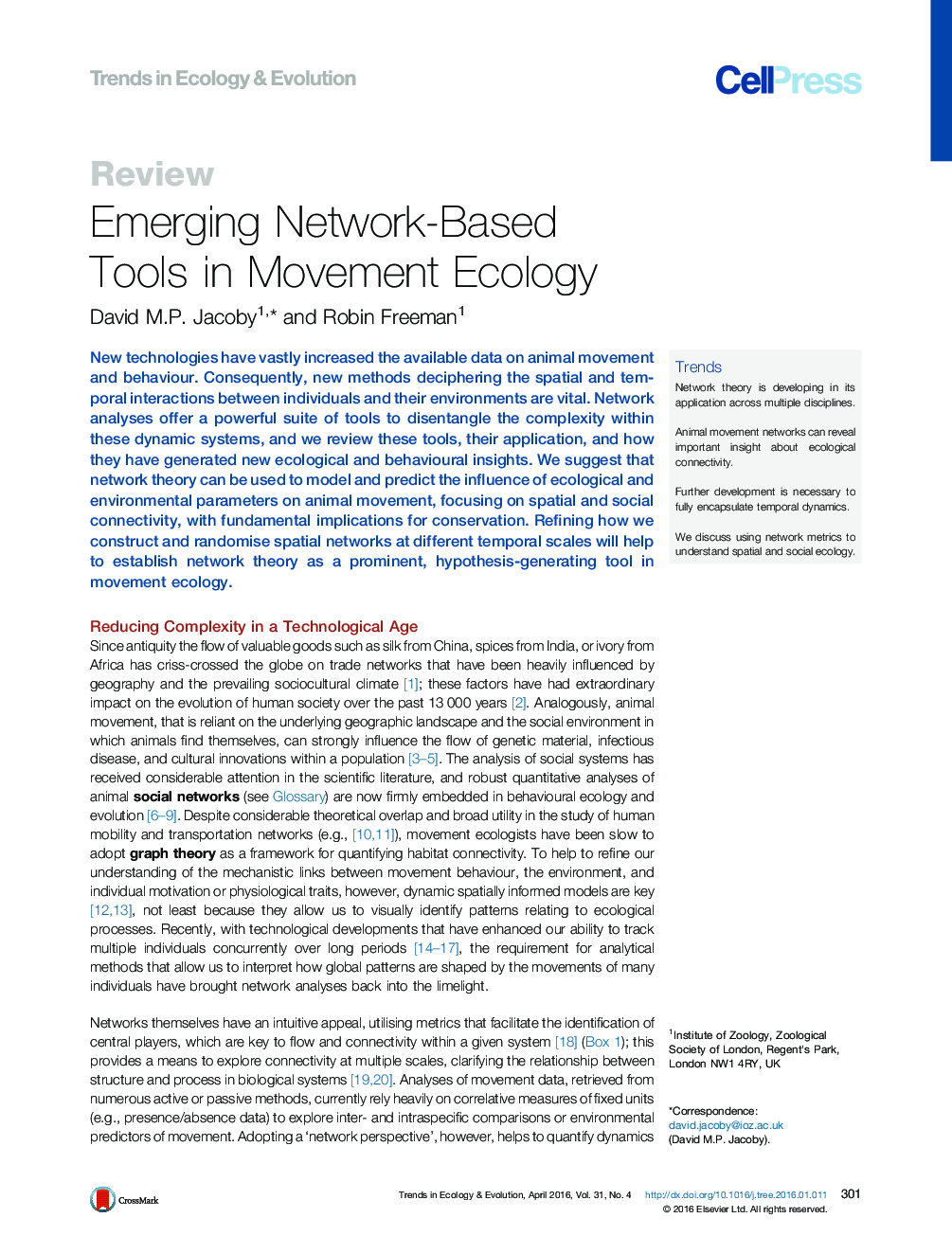| Article ID | Journal | Published Year | Pages | File Type |
|---|---|---|---|---|
| 142318 | Trends in Ecology & Evolution | 2016 | 14 Pages |
New technologies have vastly increased the available data on animal movement and behaviour. Consequently, new methods deciphering the spatial and temporal interactions between individuals and their environments are vital. Network analyses offer a powerful suite of tools to disentangle the complexity within these dynamic systems, and we review these tools, their application, and how they have generated new ecological and behavioural insights. We suggest that network theory can be used to model and predict the influence of ecological and environmental parameters on animal movement, focusing on spatial and social connectivity, with fundamental implications for conservation. Refining how we construct and randomise spatial networks at different temporal scales will help to establish network theory as a prominent, hypothesis-generating tool in movement ecology.
TrendsNetwork theory is developing in its application across multiple disciplines.Animal movement networks can reveal important insight about ecological connectivity.Further development is necessary to fully encapsulate temporal dynamics.We discuss using network metrics to understand spatial and social ecology.
